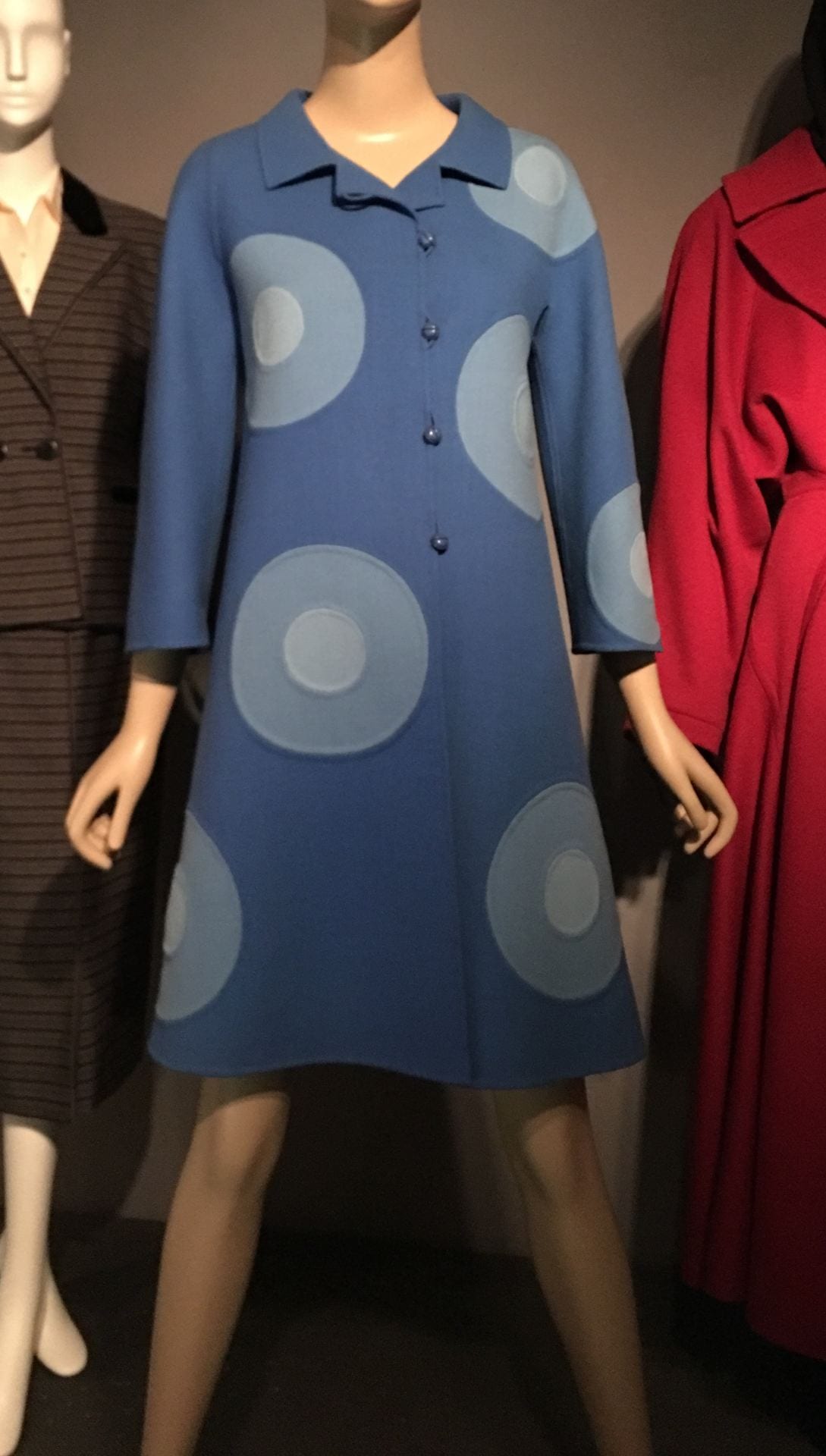I went to the Fabric in Fashion exhibition at The Museum at FIT. The exhibition explored the cultural history of textiles in Euro-American women’s fashion over the last two and a half centuries in order to recenter the fashion narrative on materiality. It focused on four of the most common fibers in Western women’s fashion: silk, cotton, wool and synthetics.
The garment that I chose to discuss for this week’s LP Post is the double-faced wool dress and coat by Mila Schön in 1968. The fashions of the 1960s reflected social change: the women’s rights movement in the 1960s sought equal rights and opportunities for women. It coincided with and is recognized as part of the “second wave” of feminism. While the first-wave feminism of the 19th and early 20th centuries focused on women’s legal rights, especially the right to vote, the second-wave feminism of the women’s rights movement touched on every aspect of women’s lives- including politics, work, family and sexuality. Setting the tone for modern style, the decade revolutionized womenswear with bold colors, striking cuts and a youthful attitude.
Schön’s garment reflects a time where traditions were broken and self-expression was encouraged. The dress/coat is an example of a woman’s work suit from the 1960s: the ‘structured’ look became androgynous as more women joined the workforce. The curator included the garment in the exhibition, Fabric in Fashion, to show off the fabric’s structure and properties: wool’s structure makes it flexible, resilient, easily dyed and a great insulator. With heat and moisture- wool is moldable- the founding principle of tailoring.
Additionally, the length of the dress/coat, although slightly longer than the ‘traditional’ 1960s miniskirt, is a lot shorter than the lengths of similar garments of the previous decade: miniskirts gave girls and women a way to express their sexuality and newfound freedom.


